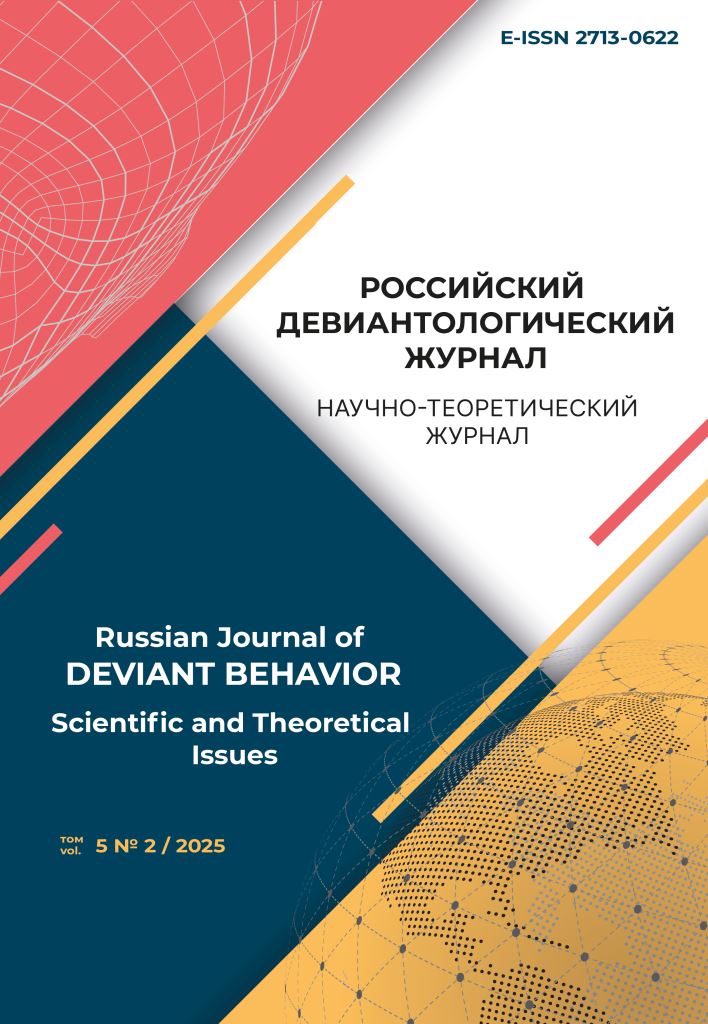Kazan, Russian Federation
Kazan, Russian Federation
UDC 159.9
Introduction. In modern realities the problem of bullying has an important place in the educational system, requiring immediate solution by the subjects directly related to the educational process, psychological and pedagogical support, prevention of criminal acts. This research examines the prevention programmes of bullying (cyberbullying), school shooting using the example of works of national and foreign scientists. A significant part of the study is devoted to the analysis of programmes for the prevention of bullying (cyberbullying) and school shooting among students of secondary general education. Different approaches to solving the problem are highlighted based on these programmes. According to the results of the study, the most effective practices were summarised. In modern Russia, the issue of creating an atmosphere of rejection towards bullying is one of the key tasks of the state. Thus, the system of preventing the manifestations of ideas of extremism and terrorism at the level of educational organisations requires further improvement in order to increase the effectiveness of such preventive measures. Methods. The research is based on the study of works of national and foreign scientists, scientific publications devoted to bullying in the education system. Research results. It is revealed that educational organisations need a comprehensive approach based on the interaction of all participants of the educational process. The necessity of creating a safe educational environment is substantiated.
bullying, cyberbullying, school shooting, secondary general education, educational organisation, students, prevention, work programme
1. Batalov, D. R. (2024). Vospitatel'naya sreda obshcheobrazovatel'noj organizacii kak sredstvo profilaktiki bullinga sredi mladshih shkol'nikov: dis. … kand. ped. nauk. Moskva.
2. Bashmakova, E. A., Degtyarev, E. A. (2021). Faktory i social'nye prichiny bullinga i kiberbullinga v podrostkovom vozraste. Problemy sovremennogo pedagogicheskogo obrazovaniya, 71-1, 36–38.
3. Bochaver, A. A., Hlomov, K. D. (2014). Kiberbuling: travlya v prostranstve sovremennyh tekhnologij. Psihologiya. Zhurnal Vysshej shkoly ekonomiki, 11 (3), 177–191.
4. Danielyan, Z. V. (2021). Informacionnaya kul'tura uchitelya kak faktor profilaktiki podrostkovogo kiberbullinga. Kazanskij pedagogicheskij zhurnal, 1 (144), 64–70.
5. Erina, I. A., Buzni, V. A., Korzh, A. A. (2021). Bulling i puti ego profilaktiki v obrazovatel'noj praktike. Mir nauki, kul'tury, obrazovaniya, 1 (86), 81–83.
6. Ispulova, S. N. i dr. (2023). Social'no-pedagogicheskaya profilaktika kiberbullinga v podrostkovoj srede. Sovremennoe pedagogicheskoe obrazovanie, 7, 65–69.
7. Semenova, N. B. (2023). Bulling i kiberbulling v podrostkovoj srede: rasprostranyonnost', metody zapugivaniya, rolevoe povedenie uchastnikov. Zdravoohranenie Rossijskoj Federacii, 67 (4), 313–319.
8. Slastihina, O. A., Zhelonkina, YU. N., YUzhakova, I. O. (2019). Bulling v shkol'noj srede i ego profilak¬tika. Problemy sovremennogo pedagogicheskogo obrazovaniya, 64-1, 358–362.
9. Shabanova, T. L. i dr. (2019). Psihologicheskoe nasilie vo vzaimootnosheniyah podrostkov v shkole: formy proyavleniya i sposoby zashchity. Nizhegorodskij psihologicheskij al'manah, 1 (2), 167–177.
10. Espelage, D. L., & Swearer, S. M. (2010). Bullying in North American Schools, 2nd Ed. New York: Routledge. https://doi.org/10.4324/9780203842898
11. Olweus, D. (1993). Bullying at School: What We Know and What We Can Do. Oxford: Blackwell Publishing.
12. Rigby, K. (2007). Bullying in Schools: And What to Do About It. London: Jessica Kingsley Publishers.
13. Salmivalli, C., Lagerspetz, K., Björkqvist, K., Österman, K., & Kaukiainen, A. (1996). Bullying as a Group Process: Participant Roles and Their Relations to Social Status Within the Group. Aggressive Behavior, 22 (1), 1–15. https://doi.org/10.1002/(SICI)1098-2337(1996)22:1<1::AID-AB1>3.0.CO;2-T
14. Smith, P. K. (2014). Understanding School Bullying: Its Nature and Prevention Strategies. London: SAGE Publications.















